Are you into thrifting? I love nothing more than finding an awesome deal on an antique teacup at a local thrift store. I’ve even been known to visit the bins in downtown Saint Louis, MO in my search for the most unique antique teacups. I love looking for vintage teacups and saucers. Finding them is even better. But how do you find the best deals on teaware?
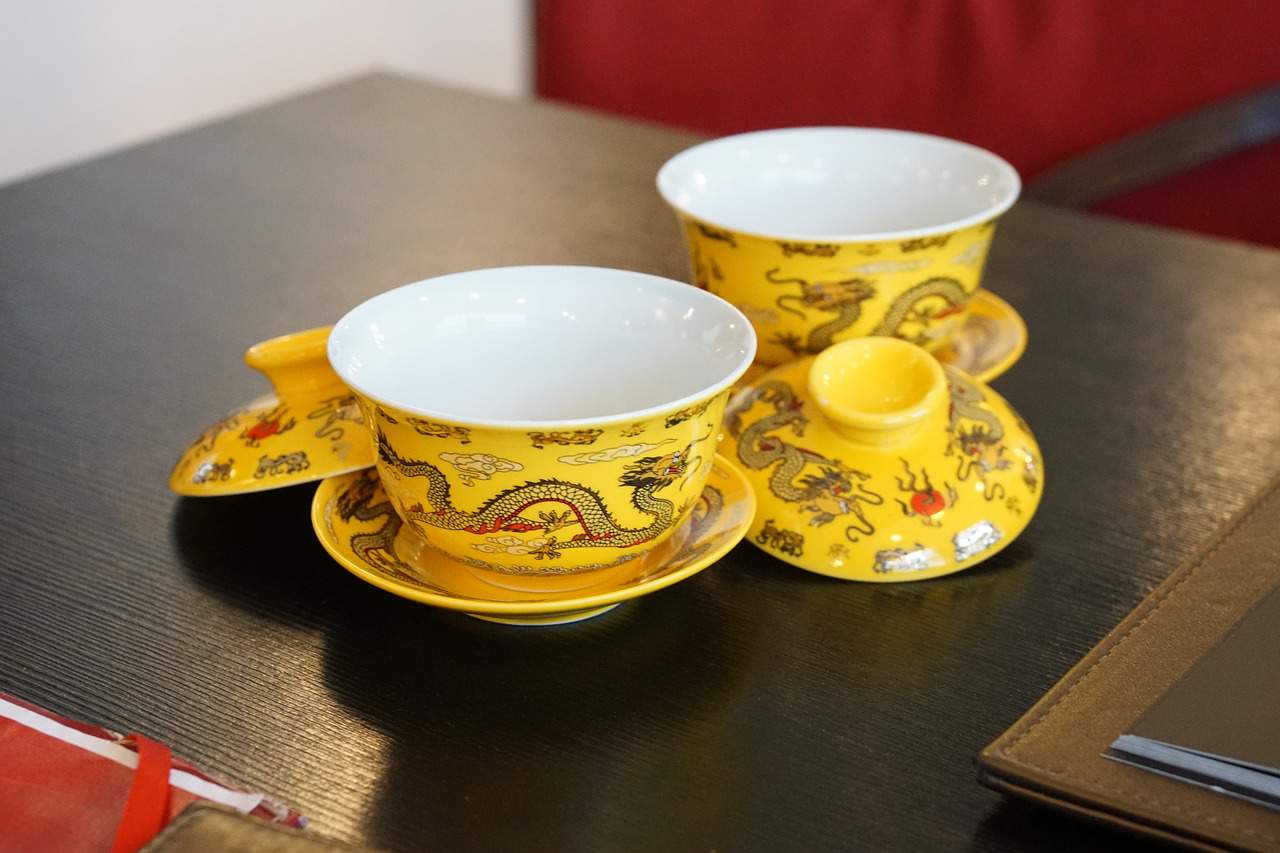
How to find and identify an antique teacup
Garage sales, thrifting, the bins, estate sales, or grandma’s hand-me-downs? How do you find antique teacups, and how do you know you have one? These are some of the questions I am going to answer for you. Finding vintage teacups and saucers is not as hard as you think. You can also find tons of cheap teacups that are a beautiful addition to your tea collection.
Teacups have been used since 220 AD in China, but became popular in Europe around the 1600s. These were not the teacups we see today; the teacups in 1600 were bowls (no handles), and tea was sipped from the bowl. Porcelain was soon developed, and handles were then added to the bowls.
White porcelain tea wares have the reputation of “fake jade” as early as the Tang Dynasty. They are elegant in shape. Although they do not have a colorful appearance, they are simple and pure. The white texture can better reflect the color of tea liquid. The white porcelain tea wares have moderate heat retention and air permeability, so it can be used to brew any type of tea. This also makes it becomes the most commonly used tea set.
How do I know if my teacup is an antique
Several factors make a teacup an antique. These include age, manufacturer, design, and color. Delft blue, which appears like a whitewashed blue, is one of the most popular older colors. Pink is next, followed by gold. Teacups and pots decorated in gold are either decal or painted in detail.
Smaller antique teacups were probably used by children as a play tea set. There are also Chinese cups that have slightly taller handles.
What are vintage teacups and saucers made of?
Bone China – Bone, ash, ground stone, and clay. The finished product is somewhat translucent. Tends to be more of an Ivory color.
Hard Paste Porcelain – Kaolin (clay) and/or ground alabaster. This was originally produced in China and is a common product in Chinese art. It will be more white in color. If you tap hard porcelain with your finger, the tone will be of a higher pitch.
Soft Paste Porcelain – Local clay to avoid using Chinese Kaolin. This resulted in a softer finish. Shows to be more of a white color.
There is an experience of drinking from a true bone china cup. Bone china does not absorb the flavors or aroma of the teas like other compositions do. So drinking from bone china will give you the flavor and aroma of the tea only. Nothing was removed or changed, just pure tea.
Is bone china ethical?
There is not a lot of manufacturing of bone china in our present day. When bone china was sourced, there were not a lot of guidelines. It was easily sourced and could have been unethically sourced. Few know the real answer to this question and can only guess.
Is bone china still manufactured?
Most but not all (see below) teacups have stamps on them. The stamps may identify the area and company of production.
In the United States, there were many companies whose signatures you would want to find and hold on to:
Hall China Company – Autumn Leaf dinnerware (largely duplicated)
- Horner Laughlin
- Lenox
Lenox is the only American company manufacturing bone china. Lenox has made dinnerware for six US presidents.
In Japan, if you find a marking “made in occupied Japan” (following WWII), this is far more collectible than “made in Japan”. Companies you want to look for are:
- Noritake
- Ku tank Kousen Kiln
- Sami Trading Company
European Makers include
German:
- Meissen
- Rauenstein
Great Britain:
- Wedgwood
- Aynsley
- Staffordshire
Russia:
- Lermontov
- Kuznetsov
France:
- Limoges
- Bernardaud
You can use these two references to look up the stamps on the bottom of your cups. This will help you to research further when and where the cups were made. (KOVELS) and (Gothborg.com)
No stamp? Take it to an appraiser, as it may be of some value. There was a short period of time when no stamp was placed on the bottom of teacups. During that time, it was common with bone china. First, identify that your piece is bone china, then move forward from there.
Use the following sites to figure out a timeline or time stamp for your teacup
- National Shelly China Club
- Meissen China Patterns
- Robbins Nest Noritake
- Spode collection
- Haviland online
What are other vintage glassware types?
Besides bone china, there are a few other vintage products out there that an antique teacup can be made of:
- Pressed glass
- Cut class
- Carnival glass
- Depression glass
- Elegant glass
- Milk glass
The most expensive antique teacup in the world
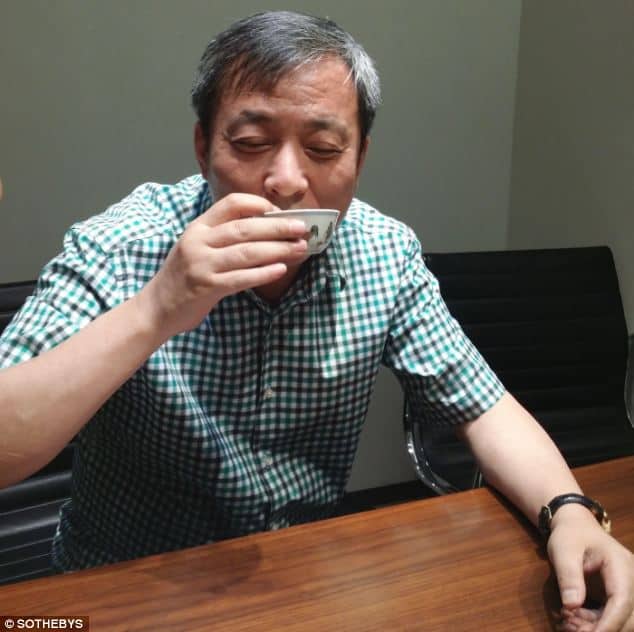
The most expensive teacup in the world is approximately 36 million US dollars. Named the chicken cup after its design of cockerel design. The cup is 3 inches and is from the Ming Dynasty Chenghua Emperor, dating between 1465 – 1417. It is considered the holy grail in China’s art world. This 500-year-old teacup was purchased at an auction for 36 million US Dollars. The Chinese art collector Liu Yiqian has been photographed enjoying a cup of tea from this rare find.
Yiqian got a lot of negative feedback for drinking from the 36-million-dollar cup. Critics say he was not treating the cup with respect.
If I had a chance to drink from a cup that dated from the Ming Dynasty, I would consider it a rare honor, and yes, I would do it, would you?
Conclusion
It could be easy to buy a few antique teacups off the internet or even score one through an auction house. I’m excited to get out there and find my rare and antique teacup at an estate sale or thrift store. The thrill is in the search and then the knowledge to know the difference. The cheap teacup from your neighbor’s garage sale may end up being worth way more than the price.
Blog posts like this and others similar are an asset to the tea community. We live in an age of impostors and knockoffs.
Without detailed information, we may never know what we’ve been sold. It could be a cheap teacup replica, or that we could have a 36 million dollar teacup in our midst.

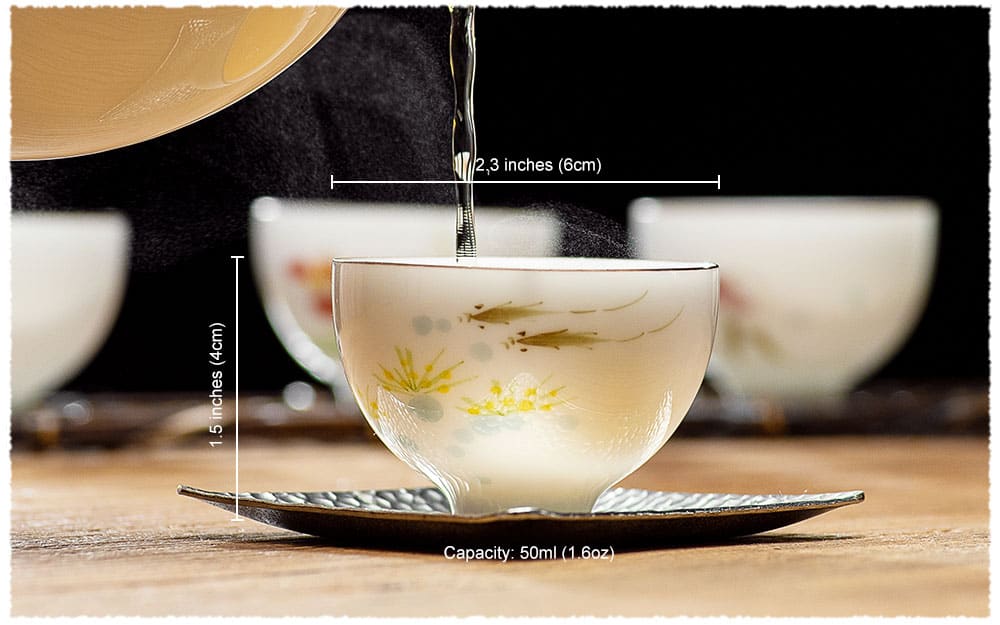

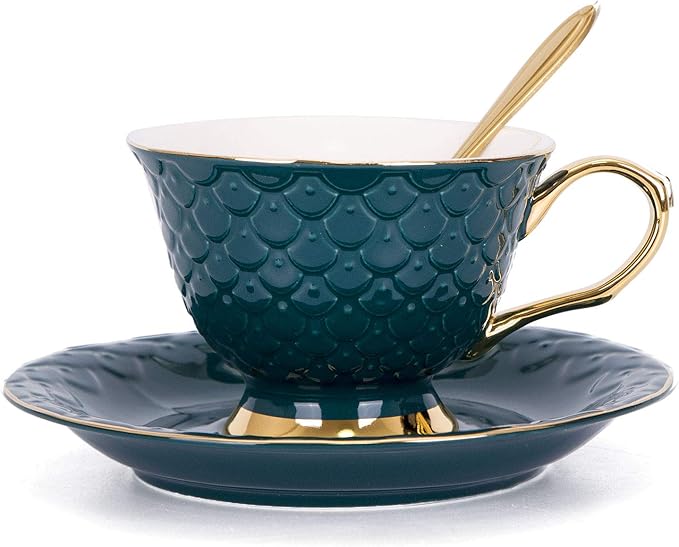
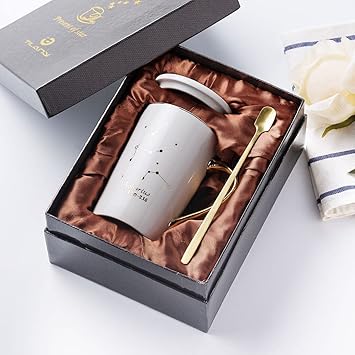

8 thoughts on “Finding The Best Deal On Antique Tea Cups”
Good, very informative.
Thank you
Thank you! I love doing what I do. I have a slight tea addiction. How about you 🙂
Hey lisa.. luv info.. on tea cups.. very informative.. thanx! Zaida
Thank you so much Zaida, I appreciate your support and continued communications!
I have some cups with Diana and prince Charles on their we1981dding
I do love those and the look of them. Something beautiful to have in your collection.
Great article. Thank you. Do you mean decorated in “gold” or “cold”?
and fixed. Thank you, Did you enjoy the article? Minus the typo?